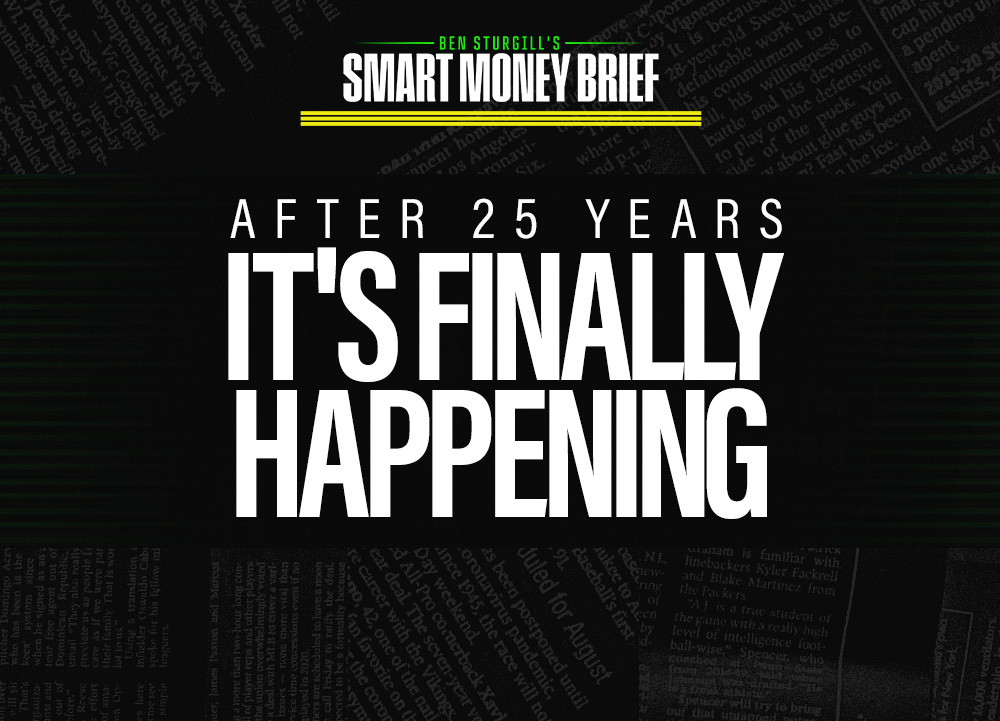Good morning, traders…
Have you ever felt overwhelmed trying to track multiple setups at once?
The best traders don’t try to pay attention to everything.
They only pay attention to what actually puts money in their accounts.
It’s all about focus.
When you learn to focus on the right areas, you’ll start spotting the highest-probability setups and completely avoid major losses.
But that’s easier said than done.
The options market is a complex place, with many distractions trying to pull your attention away from what matters most.
Today, I’ll show you what traders should focus on, once and for all…
Stop Wasting Mental Energy And Start Focusing On What Actually Matters…
Don’t Monitor More Than 2-3 Charts at Once
One of the biggest mistakes I see traders make is tracking too many opportunities simultaneously.
When you spread your attention too thin, you’ll miss the setups that matter most.
Even if you’ve got ten charts up on your screens, you can only truly focus on a few.
Trying to watch them all just leads to confusion.
Don’t make your job more difficult than it needs to be.
- Have no more than three charts on your screen at once.
- Focus on two to three trades at a time.
- Keep your watch list to around 5-10 names (maximum) so you don’t feel overwhelmed.
Not only does this simplify things — it also forces you to narrow your focus to the best setups only.
Use Price Alerts
Instead of staring at a chart for days, hoping and praying it hits the level you’re watching — set price alerts to notify you when it’s time to act.
This is how I keep track of more than one trade at a time.
(Again, not dozens of trades. Just a few.)
Any brokerage platform will allow you to do this. You’ll receive a text message and/or email anytime the stock crosses the alert level, allowing you to act immediately (without constantly babysitting the chart).
If you don’t get an alert, do nothing. Simple as that.
Embrace JOMO
This brings me to the crucial psychological aspect: practice JOMO, not FOMO.
JOMO is the joy of missing out.
If you miss a trade, don’t get mad — celebrate.
This might sound crazy, but it trains your brain to avoid the fear of missing out.
You’re celebrating because you recognize it would have been a good trade, which means you’re training your eyes to identify profitable opportunities.
This prevents that feeling of being late to everything, which can lead to discouragement. We want to celebrate, not feel discouraged.
Where to Focus for Day Trading & Swing Trading
Depending on your trading style, your ideal areas of focus may differ:
For day trades, focus on momentum…
Imagine a train with full momentum hitting a five-foot-thick reinforced concrete wall. It’s likely to break through.
Now, imagine that same train stopped, with just a one-inch steel block in front of its wheels. It would be incredibly difficult to get it moving again.
That’s the power of momentum.
When a stock has momentum, it’s likely to continue. Undisciplined buyers tend to chase after a stock that’s already running, further fueling its movement. Buying begets more buying.
To focus on short-term momentum, look for names that are already moving higher and have continued that movement in the pre-market.
Remember: Smart Money volume usually precedes momentum. That’s why we pay attention to where big money players are placing their bets.
For swing trades, focus on key support and resistance areas…
Unlike short-term momentum trades, where you’re looking for a quick move, swing trading is all about understanding a stock’s underlying structural levels.
This involves:
- Identifying strong historical support and resistance levels: These are price points where the stock has previously found significant buying (support) or selling (resistance) interest. They act as natural magnets or barriers for price movement over longer periods.
- Analyzing fundamental factors: For longer-term holds, it’s crucial to understand the company’s financials, industry trends, and any news or catalysts that could impact its long-term trajectory. You’re not just looking at the chart, but the story behind the stock.
- Patience and conviction: Longer-term trading requires a different kind of patience. You’re less concerned with daily fluctuations and more focused on whether the stock respects its key levels and if its fundamental story remains intact.
By differentiating your focus based on your trading timeframe, you can optimize your attention and decision-making for both short-term and long-term options trades.
Happy trading,
Ben Sturgill
P.S. Can you conquer our brand-new trading challenge?
The goal is simple: To make a 400% return on a small account.
$1000 → $5,000 by October 14.
We already 3x’d a small account TWICE using my Earnings Edge system…*
And if we DON’T turn $1,000 into $5,000 by October 14th…
We’re giving everyone who joins our “$5K Blitz Challenge” an exclusive $5,000 value gift…
Completely FREE of charge.
5x or bust.
That’s how confident we are.
*Past performance does not indicate future results

